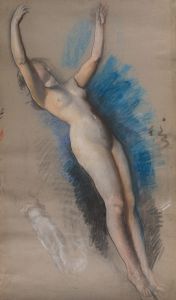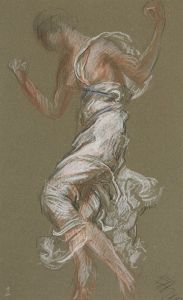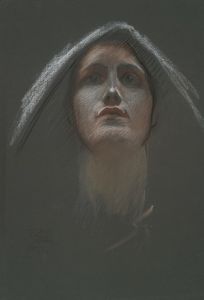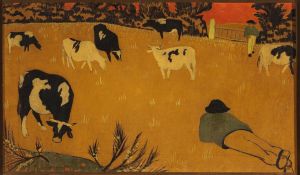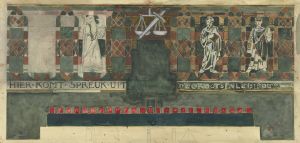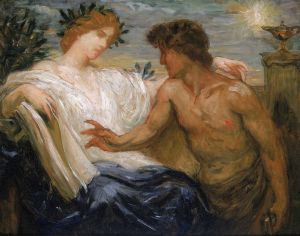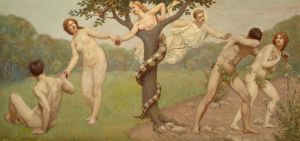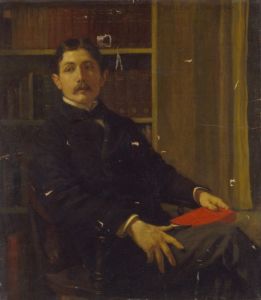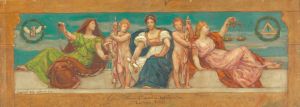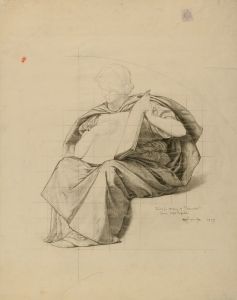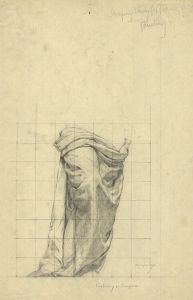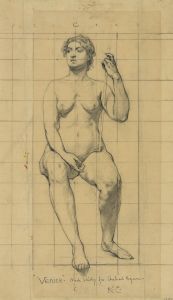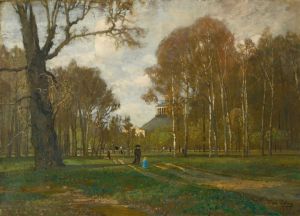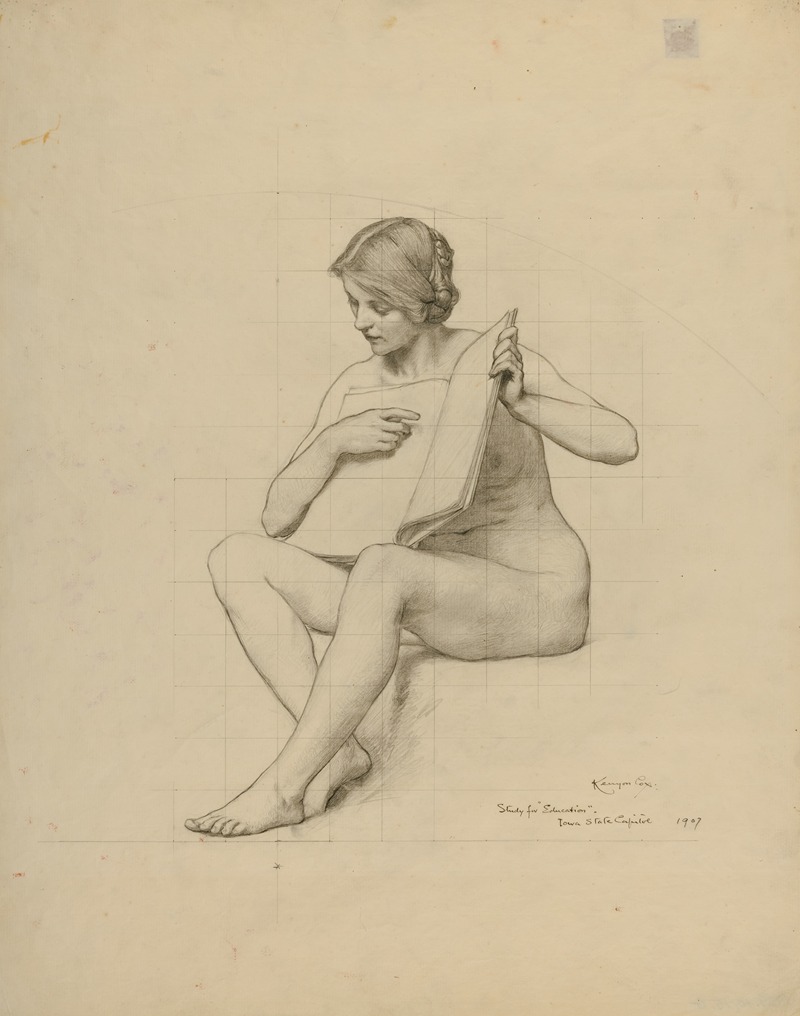
A hand-painted replica of Kenyon Cox’s masterpiece , meticulously crafted by professional artists to capture the true essence of the original. Each piece is created with museum-quality canvas and rare mineral pigments, carefully painted by experienced artists with delicate brushstrokes and rich, layered colors to perfectly recreate the texture of the original artwork. Unlike machine-printed reproductions, this hand-painted version brings the painting to life, infused with the artist’s emotions and skill in every stroke. Whether for personal collection or home decoration, it instantly elevates the artistic atmosphere of any space.
Kenyon Cox was an American painter, illustrator, muralist, writer, and teacher, active in the late 19th and early 20th centuries. He was a prominent figure in the American art scene, known for his classical style and his contributions to public art and art education. Cox was born on October 27, 1856, in Warren, Ohio, and he studied at the Pennsylvania Academy of the Fine Arts before moving to Paris to continue his education at the École des Beaux-Arts. There, he was influenced by the academic style of painting, which emphasized classical techniques and subjects.
Cox returned to the United States in 1882 and settled in New York City, where he became involved with the Art Students League of New York, both as a student and later as an instructor. He was known for his strong advocacy of classical art principles and was a vocal critic of modern art movements that emerged during his lifetime. His work often reflected his belief in the importance of beauty, order, and harmony, which he saw as central to the artistic tradition.
As a muralist, Kenyon Cox contributed to several significant public art projects. His murals can be found in various public buildings, including state capitols and courthouses. One of his notable works is the series of murals he created for the Library of Congress in Washington, D.C., which depict themes of literature, science, and art. These works are characterized by their allegorical content and classical style, showcasing Cox's skill in composition and his dedication to the ideals of the Renaissance and Baroque masters.
In addition to his work as a painter and muralist, Cox was a prolific writer on art. He wrote numerous articles and essays, as well as books on art criticism and theory. His writings often focused on the importance of maintaining traditional artistic values and techniques in the face of changing trends in the art world. Cox's essays were influential in shaping the discourse around art in America during his time, and he was respected as a thoughtful and articulate advocate for the classical tradition.
Cox's influence extended beyond his own work; as a teacher, he mentored many young artists who would go on to have successful careers. His commitment to art education and his role in nurturing the next generation of artists were significant aspects of his legacy.
Kenyon Cox passed away on March 17, 1919, but his contributions to American art continue to be recognized and appreciated. His works remain in various collections and public spaces, serving as a testament to his skill and his dedication to the ideals of classical art. While specific details about individual paintings by Cox may not be extensively documented, his overall body of work reflects his commitment to beauty, order, and the enduring principles of classical art.





